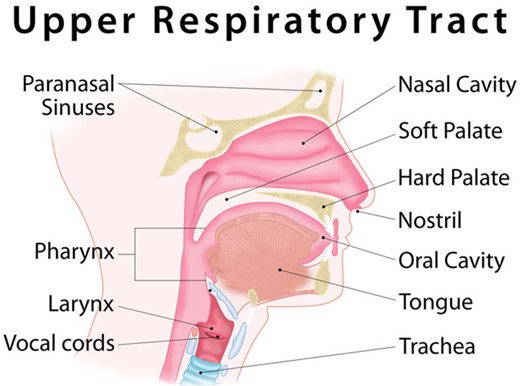The nurse observes the client as he walks into the clinic. She notices a slight tremor of the hands, slowness of movements, and a mask-like facial expression, with postural instability. Which of the following in the client's history are consistent with these observations?
Acute hemorrhagic stroke.
Alzheimer's disease.
Parkinson's disease.
Traumatic brain injury.
The Correct Answer is C
Choice A reason: This is incorrect because acute hemorrhagic stroke is not consistent with these observations. Acute hemorrhagic stroke is a sudden bleeding in the brain that can cause severe neurological deficits, such as paralysis, aphasia, or coma. It does not cause tremors, slowness, or mask-like facial expressions.
Choice B reason: This is incorrect because Alzheimer's disease is not consistent with these observations. Alzheimer's disease is a progressive degeneration of the brain that causes cognitive impairment, memory loss, and behavioral changes. It does not cause tremors, slowness, or mask-like facial expressions.
Choice C reason: This is the correct answer because Parkinson's disease is consistent with these observations. Parkinson's disease is a chronic disorder of the brain that affects movement and coordination. It causes tremors, slowness, rigidity, and postural instability, as well as mask-like facial expressions due to reduced facial muscle activity.
Choice D reason: This is incorrect because traumatic brain injury is not consistent with these observations. Traumatic brain injury is damage to the brain caused by external force, such as a blow, fall, or penetration. It can cause various neurological symptoms depending on the location and severity of the injury, but it does not typically cause tremors, slowness, or mask-like facial expressions.
Nursing Test Bank
Naxlex Comprehensive Predictor Exams
Related Questions
Correct Answer is D
Explanation
Choice A reason: This is incorrect because increasing her voice when speaking to the client may not prevent complications, but rather annoy or offend the client. The nurse should not assume that a client with a visual impairment has a hearing impairment as well unless it is confirmed by assessment or history. The nurse should speak in a normal tone and volume and identify herself by name and role.
Choice B reason: This is incorrect because lowering the bed rails before lowering the bed may increase the risk of complications, such as falls or injuries. The nurse should keep the bed rails up until the client is ready to get out of bed and lower them only when necessary. The nurse should also lock the wheels of the bed and adjust it to a comfortable height for the client.
Choice C reason: This is incorrect because using hand gestures to point to where the client will walk may not prevent complications, but rather confuse or frustrate the client. The nurse should not use visual cues or gestures that are meaningless to a client with a visual impairment. The nurse should use verbal directions and descriptions instead, such as "The restroom is on your left, about 10 steps away."
Choice D reason: This is correct because standing slightly in front and to one side of the client can prevent complications, such as collisions or falls. The nurse should guide the client by offering her arm or shoulder for support and walking slightly ahead of him or her. The nurse should also warn the client about any obstacles or changes in terrain, such as stairs, doors, or rugs.
Correct Answer is C
Explanation
Choice A reason: This is incorrect because education about mastoidectomy is not relevant for a client with an upper respiratory infection. Mastoidectomy is a surgical procedure that removes part or all of the mastoid bone behind the ear, which can become infected or inflamed due to chronic or recurrent middle ear infections. The nurse should assess
the client's ear for signs of mastoiditis, such as swelling, tenderness, or redness behind the ear, but mastoidectomy is not a common or first-line treatment for upper respiratory infection.
Choice B reason: This is incorrect because a referral for a hearing test is not necessary for a client with an upper respiratory infection. Hearing test is a diagnostic tool that measures how well a person can hear different sounds at different frequencies and intensities. The nurse should ask the client about any changes in hearing or tinnitus, which are possible complications of upper respiratory infection, but a hearing test is not a routine or urgent intervention for this condition.
Choice C reason: This is correct because education on the administration of oral antibiotics can help treat an upper respiratory infection. Antibiotics are drugs that kill or inhibit bacteria that cause infections. Upper respiratory infections can be caused by various pathogens, such as viruses, bacteria, or fungi, but bacterial infections are more likely to cause fever, otalgia, or purulent nasal drainage. The nurse should instruct the client on how to take antibiotics as prescribed, such as dosage, frequency, duration, side effects, and interactions.
Choice D reason: This is incorrect because a prescription for an antifungal cream is not appropriate for a client with an upper respiratory infection. Antifungal cream is a topical medication that kills or inhibits fungi that cause skin infections. Upper respiratory infection is not a skin infection, but an infection of the nose, throat, or sinuses. Antifungal cream has no effect on upper respiratory infection and may cause adverse effects or resistance.

Whether you are a student looking to ace your exams or a practicing nurse seeking to enhance your expertise , our nursing education contents will empower you with the confidence and competence to make a difference in the lives of patients and become a respected leader in the healthcare field.
Visit Naxlex, invest in your future and unlock endless possibilities with our unparalleled nursing education contents today
Report Wrong Answer on the Current Question
Do you disagree with the answer? If yes, what is your expected answer? Explain.
Kindly be descriptive with the issue you are facing.
